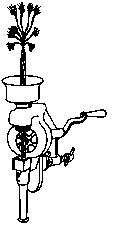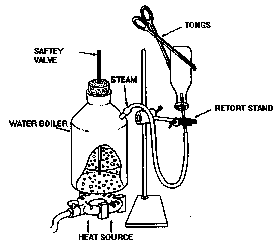Difference between revisions of "How to Sterilise Bottles"
(→Equipment Suppliers) |
(→Equipment Suppliers) |
||
| Line 80: | Line 80: | ||
===Useful websites=== | ===Useful websites=== | ||
| − | |||
| − | |||
| − | |||
| − | |||
| − | |||
| − | |||
| − | |||
Search database of packaging product suppliers<br /><u>http://www.packagingindia.com</u> | Search database of packaging product suppliers<br /><u>http://www.packagingindia.com</u> | ||
Revision as of 15:23, 27 August 2006
Contents
Short Description
- Problem:
- Idea:
- Difficulty:
- Price Range:
- Material Needeed:
- Geographic Area:
- Competencies:
- How Many people?
- How Long does it take?
Washing and Steam Sterilising of Bottles in Small Food Processing Plants
Technology challenging poverty
It is essential that all glass containers used for foods are clean and in good condition. Many small food processors face additional problems as they often rely, at least in part, on recycled bottles or jars. The following suggest some possible solutions to overcome bottle treatment problems.
All glass, whether new or recycled, must be treated as dirty and considered unsuitable for packaging unless cleaned. Recycled containers must be treated with great suspicion as they could have been used for storing unpleasant materials. It is recommended that all recycled containers are rigorously inspected and rejected if there is any doubt as to their previous use.

Figure 1: Rotating brushes with treated steel or bronze bristles
Bottles should be washed, if possible, outside the general production unit as glass splinters from the inevitable breakages should be kept as remote from production as possible.
If labels need to be removed, overnight soaking in plastic tubs full of water will prove useful.
Washing can be carried out in a large concrete sink lined with rubber (eg car mats) to reduce breakages. The actual cleaning can be done with nylon bottle brushes and detergent. Rotating brushes with treated steel or bronze bristles are available and are comparatively cheap, see Figure 1.
A very good small machine, Figure 2, incorporates both a rotating brush and pump. By rotating the handle the brush revolves and water is pumped through its head, finally draining away through a tube to the drain.
The total removal of detergent bubbles can be very tiresome, involving repeated filling and emptying. A simple multi-head spray system will solve this problem, see Figure 3.
Once clean, washed glassware should pass as soon as possible to the packing area. It should be kept inverted in boxes to prevent dust and foreign bodies falling in through the necks.
Bottle sterilisation
It is well worth considering the steam sterilisation of bottles as a final precaution prior to filling. This is particularly true if a hot filling system is to be used. Glass sometimes contains flaws and the hot filling of a cold container can cause it to shatter. This results in splinters getting in the product and represents a total loss of product.
A simple bottle steamer can easily be made by a tinsmith from copper or brass sheet, see Figure 4. It should be noted that the vertical safety tube is absolutely essential. In use, the washed bottle is inverted over the steam spigot for 15 to 30 seconds until steam emerges from its neck. Obviously, the use of protective gloves and tongs will be necessary to handle the hot glassware. It is also strongly recommended that the operator carrying out the steaming should be required to wear safety goggles as occasionally there will be breakages. Additionally, some form of simple screen between the bottle steaming point and the filling point is recommended.
Equipment Suppliers
Bottle Washing Equipment
Gardners Corporation
6 Doctors Lane, Near Gole Market, P. O. Box 299, New Delhi - 110-001, India
Tel: +91 (0)11 2334 4287/2336 3640, Fax: +91 (0)11 2684 1886
Techno Equipments
Saraswati Sadan, 1st Floor, 31 Parekh Street, Mumbai - 400 004, India
Tel: +91 (0)22 2385 1258
Eastend Engineering Company
173/1/Gopal Lal Tagore Road, Baranagar, Calcutta 700 036, India
Tel: +91 (0)33 2577 6324, Fax: +91 (0)33 2556 6710/160
Useful websites
Search database of packaging product suppliers
http://www.packagingindia.com
References and further reading
This Howtopedia entry was derived from the Practical Action Technical Brief Washing and Steam Sterilising of Bottles in Small Food Processing Plants .
To look at the original document follow this link: http://www.practicalaction.org/?id=technical_briefs_energy
http://www.practicalaction.org/?id=technical_briefs_water


